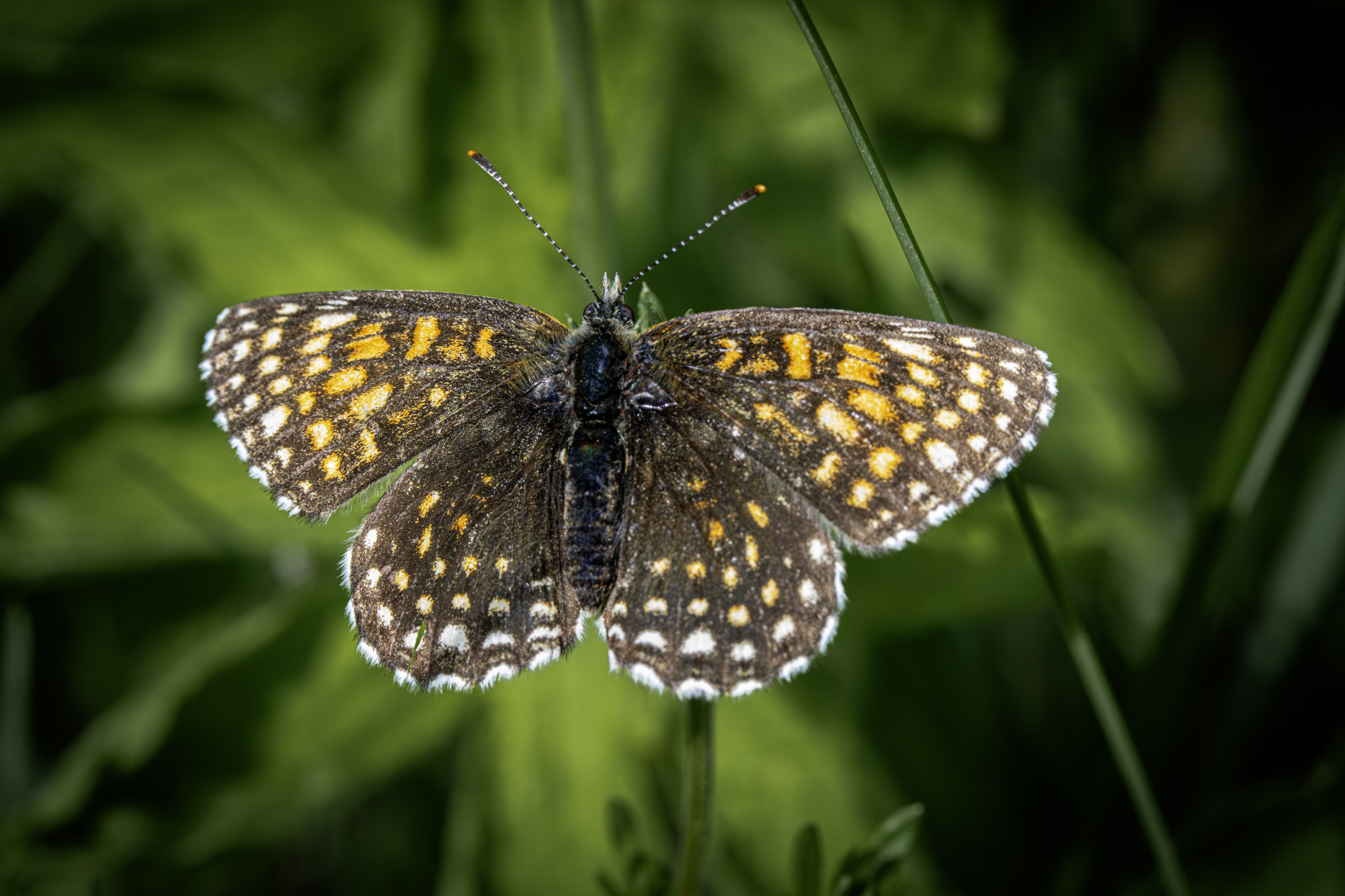The False Heath Fritillary (Melitaea diamina) is a distinctive butterfly species belonging to the family Nymphalidae. Known for its striking appearance and specific habitat preferences, this butterfly can be observed in various parts of Europe and Asia. Here’s a detailed overview of its characteristics and behavior:
Appearance:
- Size: The wingspan of the False Heath Fritillary ranges from 34 to 44 millimeters.
- Coloration: The upper sides of the wings are primarily orange with black markings. The pattern includes a series of black spots and lines, which are typical of fritillary butterflies.
- Undersides: The undersides of the wings are paler with a mosaic of white, yellow, and brown, providing excellent camouflage against the ground and vegetation.
- Distinguishing Features: Compared to similar species, Melitaea diamina has more distinct and contrasting black markings on the upper sides of its wings.
Habitat:
- Preferred Habitats: False Heath Fritillaries are typically found in damp meadows, woodland clearings, marshes, and grasslands. They prefer habitats with abundant flowering plants and host plants for their larvae.
- Geographic Range: This species is distributed across Europe and parts of Asia, including regions from France and Spain in the west to Siberia and the Caucasus in the east.
Behavior:
- Flight: These butterflies have a relatively slow and fluttering flight, often staying close to the ground and vegetation.
- Feeding: Adults feed on nectar from various flowers, including thistles, knapweeds, and other meadow plants. They are often seen basking in the sun with their wings open.
- Activity: False Heath Fritillaries are typically active from May to August, depending on the local climate and altitude. They have one generation per year.
Life Cycle:
- Eggs: Females lay their eggs in clusters on the underside of host plant leaves. The preferred host plants include species of the plantain (Plantago) and Veronica genera.
- Larvae: The caterpillars are dark with white spots and hairs. They are gregarious in the early stages, feeding on the host plant leaves. As they mature, they become more solitary.
- Pupation: Pupation occurs in a loose cocoon attached to the host plant or nearby vegetation. The chrysalis is typically brown with black markings, providing good camouflage.
- Adults: After pupation, adult butterflies emerge, ready to start the cycle anew.
Ecological Role:
- Pollination: As nectar feeders, these butterflies play a role in the pollination of various flowering plants in their habitats.
- Food Web: Caterpillars and adults serve as prey for a range of predators, including birds, spiders, and other insects, contributing to the ecological balance.
Conservation Status:
- Population: The False Heath Fritillary is listed as Near Threatened on the IUCN Red List, indicating that it faces threats in parts of its range but is not currently at critical risk.
- Threats: The primary threats include habitat loss due to agricultural intensification, drainage of wetlands, afforestation, and changes in land management practices. Climate change also poses a potential threat by altering the availability of suitable habitats.
Interesting Facts:
- Camouflage: The cryptic coloration of the larvae and pupae provides excellent camouflage, helping them avoid predation.
- Conservation Efforts: Conservation efforts for this species often involve habitat management, such as maintaining traditional hay meadows, protecting wetland areas, and ensuring the availability of host plants.
- Behavioral Traits: False Heath Fritillaries are known to be quite sedentary, often staying within a small area for their entire life cycle, which makes them vulnerable to habitat fragmentation.
In summary, the False Heath Fritillary (Melitaea diamina) is a beautiful and ecologically significant butterfly species that thrives in damp meadows and grasslands. Its role in pollination and the food web highlights its importance in maintaining biodiversity. Conservation efforts are crucial to protect this species from the threats posed by habitat loss and environmental changes.
Visited 92 times, 26 visit(s) today
Views: 148
Subscribe to the newsletter:
